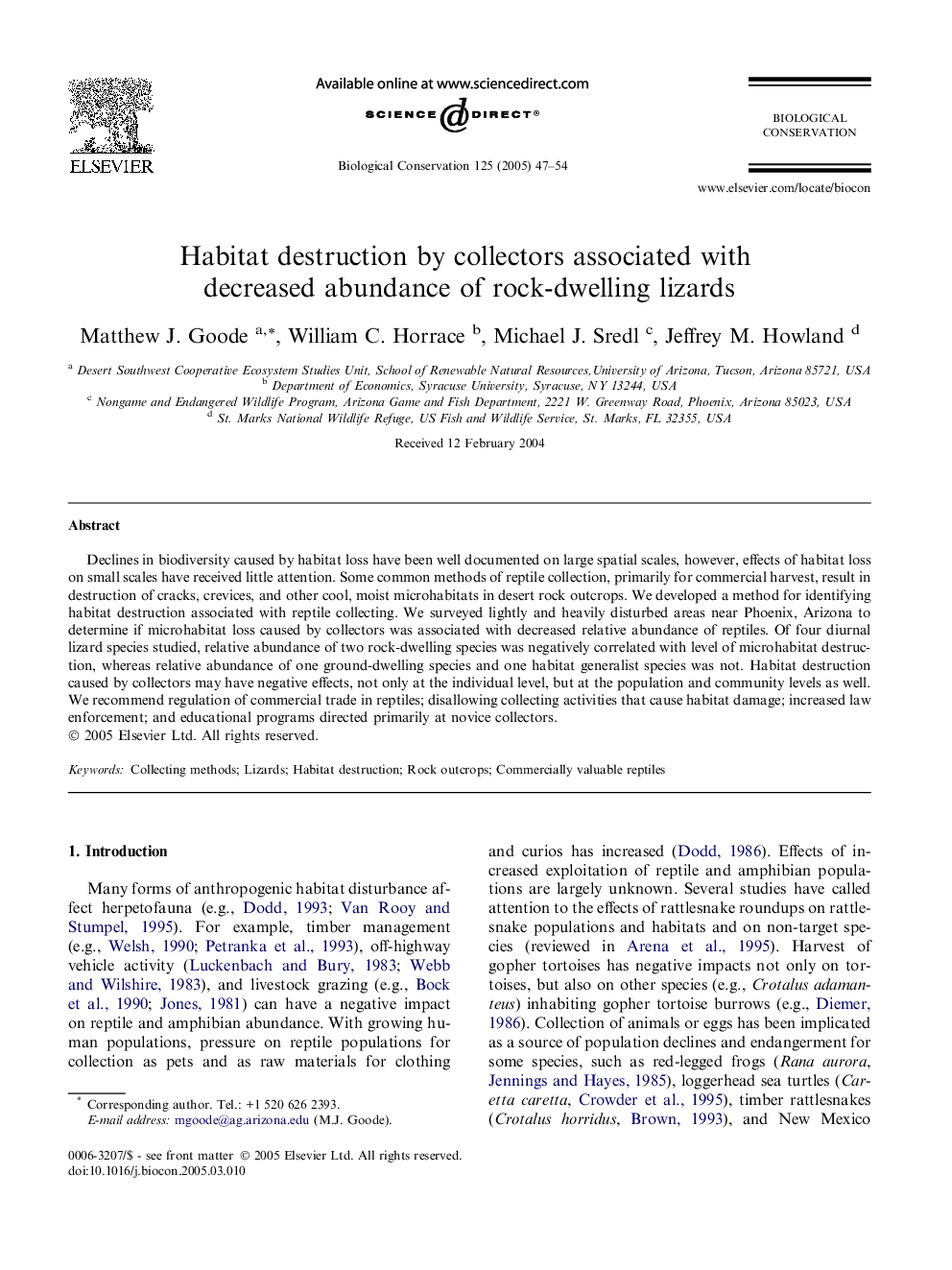| Article ID | Journal | Published Year | Pages | File Type |
|---|---|---|---|---|
| 9446145 | Biological Conservation | 2005 | 8 Pages |
Abstract
Declines in biodiversity caused by habitat loss have been well documented on large spatial scales, however, effects of habitat loss on small scales have received little attention. Some common methods of reptile collection, primarily for commercial harvest, result in destruction of cracks, crevices, and other cool, moist microhabitats in desert rock outcrops. We developed a method for identifying habitat destruction associated with reptile collecting. We surveyed lightly and heavily disturbed areas near Phoenix, Arizona to determine if microhabitat loss caused by collectors was associated with decreased relative abundance of reptiles. Of four diurnal lizard species studied, relative abundance of two rock-dwelling species was negatively correlated with level of microhabitat destruction, whereas relative abundance of one ground-dwelling species and one habitat generalist species was not. Habitat destruction caused by collectors may have negative effects, not only at the individual level, but at the population and community levels as well. We recommend regulation of commercial trade in reptiles; disallowing collecting activities that cause habitat damage; increased law enforcement; and educational programs directed primarily at novice collectors.
Related Topics
Life Sciences
Agricultural and Biological Sciences
Ecology, Evolution, Behavior and Systematics
Authors
Matthew J. Goode, William C. Horrace, Michael J. Sredl, Jeffrey M. Howland,
